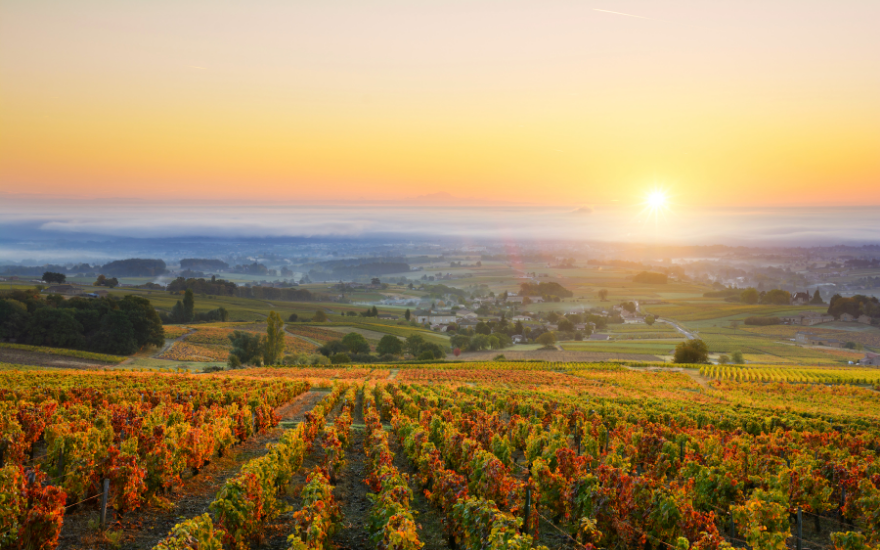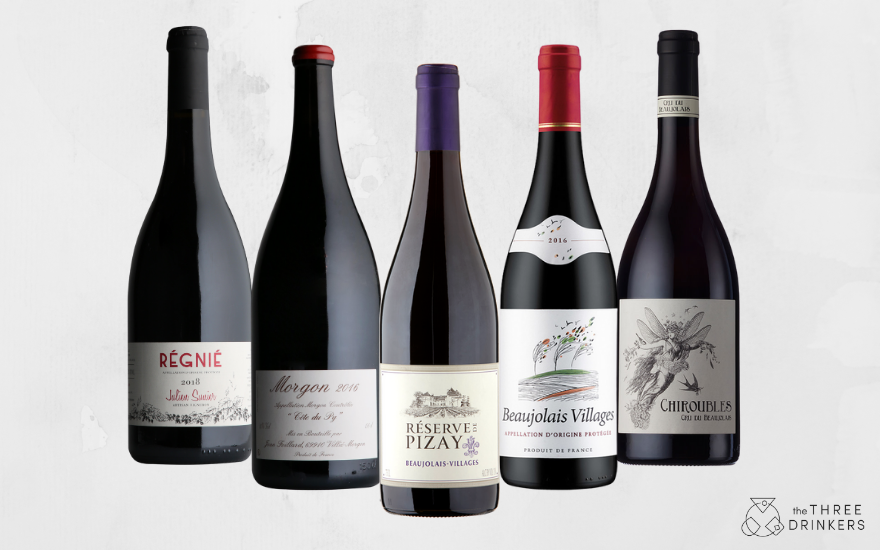Words by Helena Nicklin
If you’re looking for a lighter style of red with all the flavour, then give Beaujolais a chance. As we celebrate Beaujolais Nouveau day (always on the third Thursday of November), Helena thought it was the perfect time to give you the lowdown on this retro wine style that is back with a bang!
Today, as I write, it is Beaujolais Nouveau Day; a pretty special time for the wine industry because it’s the day that the new vintage of Beaujolais Nouveau is released for sale. In the past, this release date has been combined with a mad dash to France to bring back the very first bottles fresh from the wine press and crack them open for brunch, as the ‘nouveau’ wine style is meant to be drunk very young, within months of bottling at the max. Today however, the flouncy, bubblegum nouveau style has fallen out of favour with wine lovers somewhat, who have turned their attention to the more sophisticated iterations of Beaujolais which, quite frankly, have been getting better and better every year. Here’s a quick guide to the various levels and styles of Beaujolais.
What is Beaujolais?
Beaujolais is a wine region (appellation) in the middle of France, located immediately below the Burgundy region, running from just south of Macon, almost to Lyon. Most Beaujolais wines are red and the grape used to make them is Gamay. You can get a few pinks and whites too made from Chardonnay, Aligoté and Gamay but it’s the reds that are famous. Generally speaking, Beaujolais red wine as a style is a little like Pinot Noir in terms of body, but has more of a ripe strawberry note and even softer tannins.
Beaujolais Nouveau
‘Nouveau’ means ‘new’. This is the bubblegum-like, sweet and simple style that’s often more like a boozy cordial than a wine. Part of the reason for this is the fact that it’s made with a process called carbonic maceration that smothers grapes with CO2 so they implode rather than being crushed. The juice is then gently run off, so it is not mixed with drying, textural tannins from the skins. It’s a wine that’s not made to be aged, so you should plan to enjoy a glass as soon as possible after it is bottled for the best experience of the fresh and juicy flavour. By the time next year’s batch is ready, this year’s bottles will already taste stale and tired. This nouveau style is not to be confused with what some might call ‘proper’ Beaujolais styles below:
Beaujolais ‘proper’
Nouveau novelty aside, Beaujolais is a serious wine region with three core levels of quality. The first is straight Beaujolais AOC, where grapes can be harvested from around all 96 villages of the region. Up a notch then is the mid-range Beaujolais-Villages AOC, which used grapes from the North of the region and from a designated 39 of the villages only. At the top of the quality tree are ten Beaujolais ‘Crus’ which are specific villages that are named on the label and each is know for its particular qualities, though all are made with Gamay. These villages are Saint-Amour, Juliénas, Chénas, Moulin-à-Vent, Fleurie, Chiroubles, Morgon, Régnié, Brouilly and Côte de Brouilly.
Tasting Tour
Try these easy-to-find Beaujolais wines to see why they deserve to be on your shopping list!
Beaujolais-villages ‘l’Escarpe’ 2018, £5.99, Lidl
Tangy nose and a very fruity, raspberry-scented palate. Exceptionally easy drinking and only 12.5% abv.
Available in store.
Beaujolais-villages, Reserve du Pizay, £8, Co-op.
Another very easy drinker, this time with some darker, more blackcurrant fruit thrown into the mix. Juicy and soft with a hint of spice and wild strawberry. This would be great slightly chilled.
Find it here.
Chiroubles, Beaujolais Cru, 2018, £10, Co-op.
For a Cru, this is truly excellent value - and the bottle is gorgeous too. One of the more elegant Cru wines, this is silky and spicy with summer berry notes and not too heavy on the alcohol.
Find it here.
Saint-Amour, Domaine Des Côtes de la Roche 2018, £10.95, The Wine Society.
An elegant ‘Cru wine and one of the lesser known ones, this is a light red that’s pronounced in flavour with both black and red cherry notes and very silky, but noticeable tannins. A good food Beaujolais.
Find it here.
Régnié, Julien Sunier, 2018, £21.50 from BBR
Lovely, vibrant, aromatic wine packed full of personality and crunchy, red apple and berry notes. Lots going on here. Worth the step up in price.
Find it here.
Jean Foillard Morgon, Cote du Py, 2017, £27.99 from thegrapestore.com
Exceptional, perfumed, silky, spicy light red with gorgeously ripe cherry and strawberry fruit.
Find it here.























